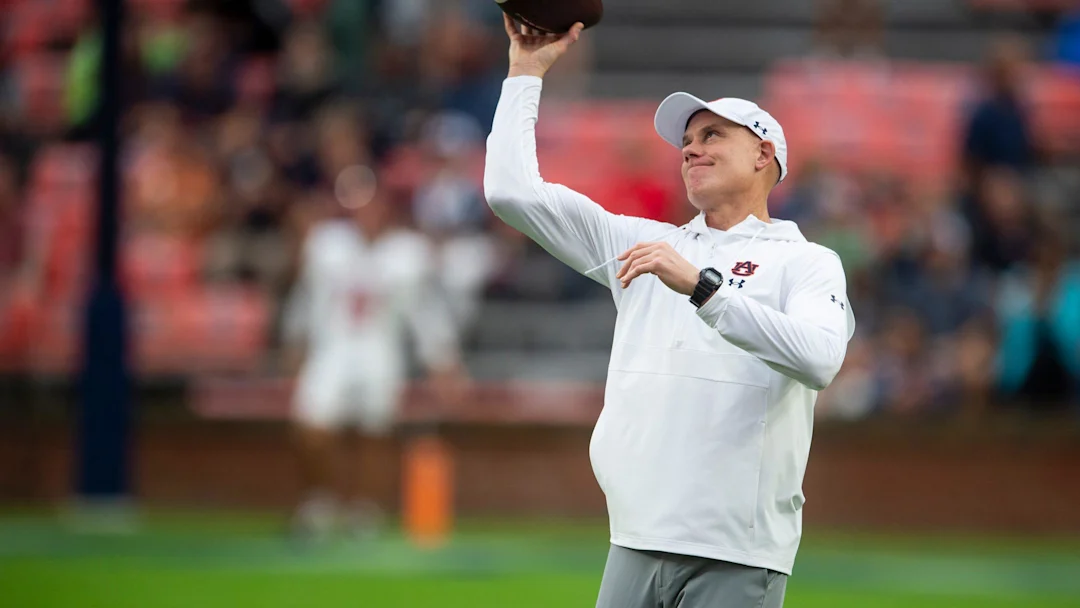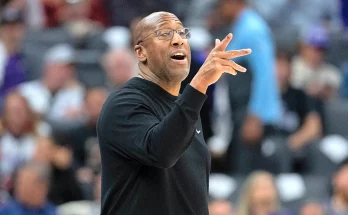Auburn football has long been known for its physical and aggressive defensive play. From the days of dominant defensive linemen clogging up the trenches to rangy linebackers flying to the ball and hard-hitting safeties locking things down in the back end, the Tigers have built their reputation on a blue-collar defensive identity. But even for a program with such a proud history on that side of the ball, there’s always room for improvement. In 2024, Auburn’s defense showed flashes of elite potential—bottling up SEC offenses, winning critical downs, and playing with effort and intensity. Still, if there was one area that ultimately held the unit back from being among the true elites of college football, it was their inability to consistently generate pressure on opposing quarterbacks.
Pass rush is a stat that doesn’t always tell the full story through sack numbers alone. Hurries, QB hits, pressures, and forced throwaways all count just as much as the flashy sack totals. When watching Auburn’s defense last season, the eye test told the story of a team that could hold its own against the run, cover decently well on the back end, and even make a few splash plays here and there. But when it came time to collapse the pocket and make quarterbacks uncomfortable in critical moments—third downs, red zone trips, or the fourth quarter of tight games—too often the pass rush was just a step slow or ineffective.
Auburn finished middle-of-the-pack in the SEC in total sacks in 2024, but a deeper dive reveals the concern. Many of those sacks came against overmatched non-conference opponents or in garbage time situations. Against the premier SEC competition—Alabama, Georgia, LSU, Ole Miss—the Tigers frequently failed to affect the quarterback in meaningful ways. Whether it was due to a lack of elite edge rushers, a limited arsenal of blitz packages, or simply a mismatch at the line of scrimmage, the lack of disruption proved costly.
There’s a direct correlation between pass rush and everything else a defense wants to do. Pressure speeds up the quarterback’s internal clock, forcing errant throws, giving defensive backs chances to make plays on the ball, and even leading to turnovers. It also helps cover up deficiencies in the secondary, because even the best cornerbacks in the world can’t stick with top receivers for six or seven seconds. When Auburn failed to get home with four, they were often forced to blitz, which created opportunities for opposing offenses to exploit mismatches or hit quick passes into vacated zones. In the high-powered world of SEC football, that’s a recipe for disaster.
Personnel-wise, the Tigers have talent, but they’ve lacked a true game-changing edge presence since the departure of Derrick Hall. While solid rotational players like Keldric Faulk and Marcus Harris contributed in spurts, none consistently demanded double teams or forced offensive coordinators to alter their game plans. That meant Auburn had to rely on scheme over individual dominance, which can work—but only to a point. Opposing offensive lines were able to hold their protections longer, quarterbacks felt more comfortable progressing through reads, and big plays resulted.
Some of the issue stemmed from Auburn’s base philosophy. The defensive staff emphasized gap integrity and sound structure—qualities that are vital to stopping the run but can sometimes lead to a more conservative pass rush approach. Defensive ends were tasked with contain responsibilities first, which limited the opportunities to take risks upfield. Linebackers were often in coverage or used in delayed blitzes rather than attacking downhill immediately. And while that method worked well in containing mobile quarterbacks, it often didn’t apply enough pressure on traditional pocket passers who picked the defense apart when given time.
In games where Auburn did manage to dial up pressure, the defense transformed. One need only look at their performance against Arkansas, where the front seven came alive, generated multiple sacks, and dominated the line of scrimmage. The entire defense fed off that energy. The secondary tightened up, the run defense improved, and the Tigers forced turnovers. It was proof that the pieces are there—it’s just a matter of consistency, aggression, and confidence in execution.
Looking ahead to the 2025 season, this issue must be addressed if Auburn hopes to take the next step. The schedule is unforgiving, with multiple high-level quarterbacks on the docket, and the margin for error in the SEC is razor-thin. An improved pass rush won’t just help Auburn win games—it’ll help them win big moments. It’ll turn field goals into punts, touchdowns into turnovers, and close losses into gritty victories. It’s the kind of upgrade that shifts the ceiling of a defense from “solid” to “dominant.”
The good news for the Tigers is that help may already be on the way. The coaching staff has made defensive line recruiting a priority, bringing in several high-upside prospects and exploring transfer portal options. Additionally, the strength and conditioning program has emphasized explosion and flexibility among pass rushers—two physical traits that translate directly to quarterback pressure. In spring practices, reports out of Auburn suggested a more aggressive mindset from the defensive line, with coaches encouraging players to win their individual matchups rather than simply maintain their assignments.
It’s also worth noting that improving the pass rush isn’t solely the job of the defensive line. Coverage sacks occur when defensive backs lock up receivers long enough for the rush to get home. Discipline in the secondary, smart pre-snap alignment, and tighter zone rotations can all contribute to that end. If Auburn can force quarterbacks to hesitate even half a second longer, that’s the difference between a clean pocket and a sack. The entire unit has to work in concert.
Still, it begins and ends up front. Auburn’s ability to collapse the pocket without needing to blitz will be the single most important factor in their defensive evolution. A dominant front four is the engine that drives elite defenses—just look at what Georgia and Alabama have done in recent years. The Tigers are capable of getting there, but it requires more than hope. It requires development, trust in the scheme, and above all, an aggressive mindset.
There’s also the matter of depth. One of the key issues last season was the drop-off when starters came off the field. Depth along the defensive line is critical in the SEC, where injuries are frequent and snaps pile up quickly. Auburn needs multiple contributors—both on the edge and inside—who can play at a high level. That means younger players need to step up and rotational guys need to become reliable, not just serviceable. Conditioning and rotations also matter; fresher legs in the fourth quarter can make the difference in chasing down a scrambling quarterback or finishing off a drive with a sack.
Auburn’s defensive coaching staff understands the challenge ahead. They’ve made it clear through both words and actions that generating pressure is a priority. Whether that comes through more exotic blitz packages, stunts up front, or simply winning more one-on-ones, something has to give. The talent is present, the blueprint exists, and the urgency is real. If the Tigers can figure it out, they’ll not only field a better defense—they’ll change the dynamic of their entire team.
Offense might win games in today’s college football, but defense still decides championships. And within that defensive framework, the ability to affect the quarterback reigns supreme. Auburn has the tradition, the tools, and the tenacity to get it done. The question is whether they’ll turn that potential into production in 2025. If they do, don’t be surprised to see the Tigers back in the national conversation—fueled by a defense that finally learned how to get after the quarterback with ruthless consistency.


